Often you can notice the smell of acetone in the urine. The reason for this phenomenon is the formation of ketone bodies. This occurs with insufficient intake of carbohydrates, prolonged infectious diseases, as well as diabetes and other diseases. Regardless of the cause of the appearance, this condition is considered pathological and requires correction. What most often becomes a provocateur of increased acetone in the urine (ketonuria) and how to treat this disease?
Content
- Acetone appeared in the urine: what does this mean?
- Acetone in the urine - the reasons for the appearance
- Acetone in the urine - symptoms of pathology
- Acetone in the urine. Features of acetonuria in children and pregnant women
- Determination of acetone in urine - diagnostic methods
- Acetone in the urine - treatment
- Video: "The norm of ketone bodies in the urine"
Acetone appeared in the urine: what does this mean?
Acetone is a substance that is included in the group of certain metabolism products, namely ketone bodies. As a rule, normal ketone bodies are present in each organism in small quantities. They are synthesized by the liver as a result of spontaneous disclosure of carbon dioxide from carbon acid. They do not have much importance for the physiological functioning of the body, but in high concentrations they have a toxic effect on the brain and nervous system, up to a coma.
The main source of human energy is glucose. In severe forms of diabetes, strong physical exhaustion, starvation, its reserves are depleted, and the body resorts to alternative energy sources. In conditions of energy deficiency (a lack of glucose), the body begins to break down fat reserves, the byceton will be by a by -product.
With a strong increase in the level of ketone bodies, ketonomy develops. But the liver, due to the lack of the necessary enzyme mechanism, is not able to dispose of a large number of ketone bodies, which causes the “poisoning” of the body with acetone.
Important! Acetone itself is not a disease. This is only a clinical manifestation of other diseases, in particular, metabolic disorders.
If the level of ketone bodies greatly exceeds the norm, and the reasons for its increase for a long time are not eliminated, then acetone in the urine in adults causes serious complications:
- toxic poisoning of the brain, often a coma occurs as a result of this;
- significant metabolic disorders of the composition of the blood;
- damage to the pancreas, mucous ball gastrointestinal gastrointestinal tract;
- renal failure;
- violation of the cardiovascular and respiratory systems;
- critical dehydration increasing the risk of death.
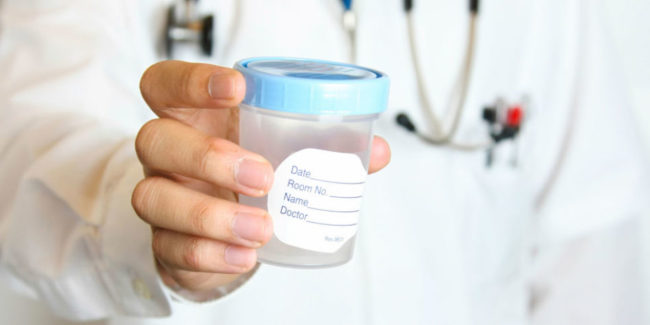
Acetone in the urine - the reasons for the appearance
A slight increase in acetone may occur with viral diseases or starvation. In these cases, a physiological reaction of the body to a deficiency of energy occurs. And when eliminating the causes of acetonuria, the patient's condition is stabilized.
When the formation of acetone goes rapidly and in critical quantities, it is time to sound the alarm. In this case, acetone will be determined not only in the urine, but also in feces and vomiting biomasses.
The common reasons why acetone in the urine rises sharply:
- Pronounced diabetes mellitus - the root cause of acetone entering the urine. For this reason, the analysis of the level of glucose is required.
- The diet is rich in fats and poor on carbohydrates. The deficiency of fast carbohydrates causes the decay of lipid reserves, and this causes the formation of acetone.
- Spending nutrition, frequent diets and even starvation also limit the full flow of sugars into the body and provoke acidosis.
- Enzymatic pancreatic disorders. If it is unable to fully digest food, the absorption of carbohydrates will be insufficient.
- Stress, strong overload when playing sports, mental exhaustion, severe diseases, operations and other conditions that require strong energy consumption.
- Diseases of internal organs causing a violation of metabolic processes. These are stenosis of the esophagus, tumors of the stomach, anemia, as well as narrowing of the gatekeeper.
- Eating poisoning and various enterovirus infections, intoxication (alcohol, drug) lead to severe acidosis.
- Infectious diseases that are accompanied by an increase in temperature above 39 ° C.
- Hypothermia or overheating in the sun. These provocateurs of acetone more often affect the children's body.
- Gestosis and gestational diabetes are manifested by an increase in acetone of pregnant women.
- Oncological processes, as well as the treatment used, is often accompanied by an increase in ketone bodies.
- Mental disorders in which a person has a strong nervous excitement.
Important! Depending on the severity of acetonuria, acetone levels in the urine may vary. So, with a mild pathology in the urine, up to 3 mmol/l can be determined, and with serious complications - more than 4 mmol/l.
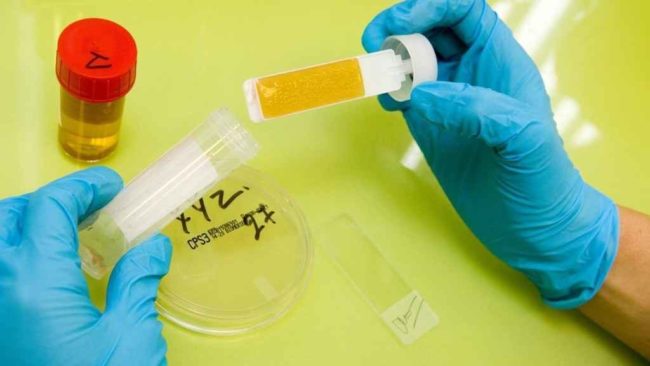
Acetone in the urine - symptoms of pathology
The first symptoms of glucose deficiency, decay of fats and the release of acetone are enough generalization. These include:
- the disappearance of appetite, and even a complete rejection of food and drink;
- the appearance of nausea, and after eating, the onset of indomitable vomiting, which can last a whole day;
- spastic pain localized in the umbilical region;
- fever to 38 ° C;
- a characteristic smell of pre -apple from the oral cavity (the so -called smell of acetone).
If the first signs are ignored, Azedosis continues to progress, the patient’s well -being deteriorates sharply and more serious symptoms appear:
- Signs of dehydration and poisoning are a significant decrease in daily diuresis (reduction in the amount of urine dedicated), dry skin, tongue, mucous membranes, pallor, unhealthy blush on the face, yellow plaque in the tongue.
- Weakness, which is manifested by a lack of strength in order to get up or even sit down; Complete apathy, difficulty breathing, photophobia can develop.
- Toxic damage to the nervous system: first, a person is in an excited state, which is soon replaced by lethargy, indifference, drowsiness. Next, convulsions and acetonomic coma may appear.
- The pungent smell of acetone: with the further development of acidosis, a characteristic smell comes not only from the oral cavity, but also from the skin, vomiting of the masses and any extracted liquids. The symptom can be clearly manifested or completely absent, therefore it is not a method of diagnosing pathology.
- Echo-signs of liver changes (it increases in size, which is noticeable with ultrasound).
- Clinical manifestations in analyzes: increase in ESR, leukocytosis, urine acetonuria, reduction of glucose, increase in cholesterol.
Important! Such symptoms allow you to independently understand that you have acetone in the urine, but what should only be determined to do after confirming the diagnosis.
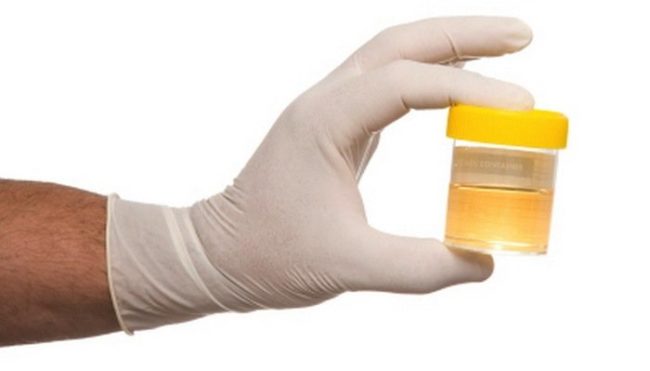
Acetone in the urine. Features of acetonuria in children and pregnant women
In children and women, a ketoacitosis of noniabetic nature often occurs in a position. This phenomenon is short -term in nature and is determined by the characteristics of metabolism, which over time returns to normal. But the consequences of not treated acidosis are also life -threatening, so you need to treat the appearance of acetone very seriously.
Acetone in the urine in a child
The appearance of acetone in children, which is not associated with endocrine disorders (diabetes, thyroid hyperfunction) can occur up to 12 years. With frequently repeated attacks of acedosis, an atonic syndrome is diagnosed.
Children do not have a large stock of carbohydrates, which is provided in adults in the form of glycogen (the latter is found in the liver). Therefore, with severe activity and deficiency of carbohydrates in nutrition in children, acetonuria is often diagnosed.
Up to 12 years, the pancreas is poorly formed, which also contributes to poor absorption of carbohydrates and the appearance of ketone bodies in biological fluids.
In addition, the deficiency of enzymes complicates the digestion of food. This leads to the development of putrefactive flora and damage to the kidneys, intestines and liver, and then to a slight increase in ketone bodies.
The causes of acetone in babies can be the same as adults. For example, acute respiratory viral infections, intestinal infection, banal poisoning, oily food or overheating in the sun can end with ketonuria. Among other acetone provocators in children, overeating, insufficient drinking regime, move, psychological shock, congenital anomalies of the esophagus are distinguished.
Important! Most often, the cause of acidosis in children is the wrong diet. This poses a threat to the health and life of children, so special attention should be provided to a balanced diet and a healthy lifestyle of the child.

Acetone in the urine during pregnancy
The detection of acetone in the urine in women in a position is an important signal of health problems. The primary detection of this indicator requires deep diagnosis, and in some cases and hospitalization of the patient.
The most frequent provocateur of acetone increased during the member of the baby is toxicosis in the early stages or gestosis in the second half of pregnancy. Both states are accompanied by frequent vomiting and stable dehydration. This helps to increase ketone bodies and worsen the condition of a woman, including the development of miscarriage.
Another reason that urine smells of acetone in women is a violation of the diet. The use of fatty, high -calorie foods, often “stuffed” with harmful preservatives and dyes, contributes to the development of pathology. Therefore, you do not need to succumb to the temptation and absorb cakes, sweets and Chebureks in kilograms, citing the fact that the baby “requires” this.
The other side of this situation is a restriction of yourself in food during pregnancy. Some women, afraid to get stronger, reduce the number of kilocalories and begin to starve. In addition to the fact that such a diet is poorly affected by the development of the fetus, this also contributes to the appearance of acetone. To avoid complications, you need to eat often, small portions and give preference to natural products.
Important! If a pregnant woman noticed that the urine smells of acetone, you need to immediately contact a doctor. A long absence of treatment for this pathology can lead to fatal complications.
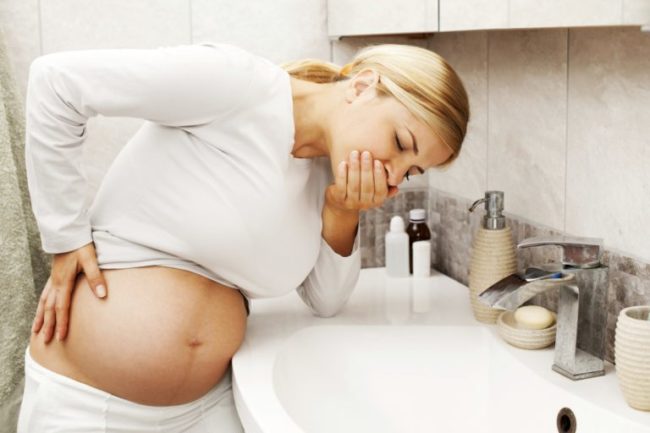
Determination of acetone in urine - diagnostic methods
With the appearance of signs characteristic of acetonuria (the smell of acetone, fatigue, apathy, diarrhea, vomiting) immediately suspicious of an increase in acetone.
- The doctor, collecting an anamnesis, finds out the possible causes of the state. Excludes the possible debut of diabetes and determines the present errors in nutrition, chronic diseases, stresses, etc.
- During the inspection, the specialist assesses the degree of pallor of the skin, the presence of acetone smell, heart rate, as well as the duration of vomiting and diarrhea.
- However, in all cases, acetonuria should be confirmed by analysis. For this, a standard acetone test is carried out in the urine. An analysis is done both in the laboratory and at home.
- The pharmacy has special test strips with an indicator, which determine the concentration of acetone in the liquid. Such tests are especially useful for parents whose children suffer from acetonic syndrome. They are inexpensive and are distinguished by a high degree of information content and accuracy of the result. All that is required for diagnosis is to collect the morning urine, then immerse the strips on acetone in the urine, wait a couple of minutes and pull them out. After five minutes, you can decipher the result using a scale.
A more detailed process of measuring acetone is described in the photo below:
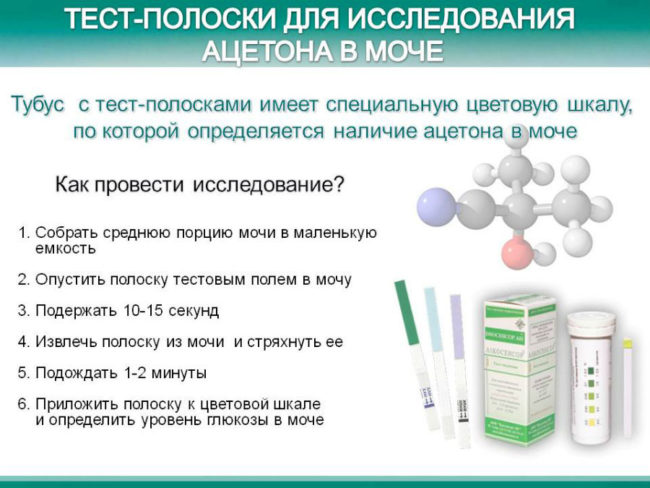
A simple scale is attached to the test. According to it, you can decipher the result after measuring acetone in the urine: the norm is determined by the lightest color of the indicator, and the maximum concentration is the darkest color.
When conducting an analysis in the laboratory, the degree of ketonuria is indicated by pluses: “+” - weak, “++” - average, “+++” - a severe degree. In the absence of acetone in the urine, the pluses are not indicated.
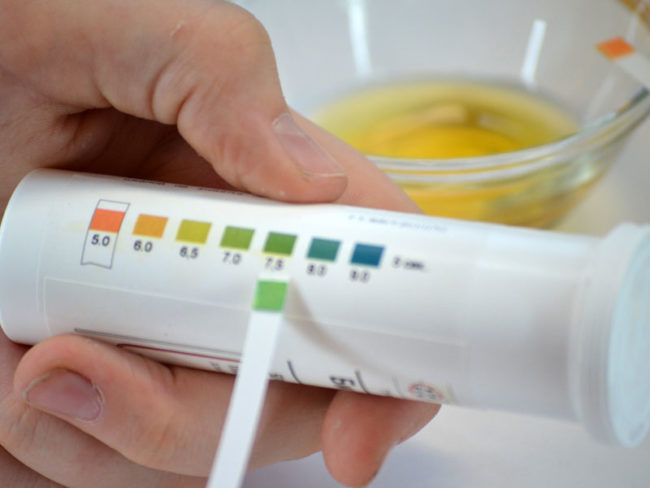
Acetone in the urine - treatment
Therapy depends on the causes of acetone. If the cause of acetonuria is diabetes, therapy is aimed at adjusting the glucose level. In other cases, treatment is reduced to filling the energy deficiency.
Ways to lower the level of acetone in the urine
First aid to the patient is to stop the acetonic crisis. If the degree of ketonuria of low or moderate severity, treatment is carried out at home. For this, the following events are used:
- Acetone excretion. To do this, make a cleansing soda enema, less often the gastric lavage. In addition, sorbents are necessarily assigned to relieve intoxication (Polysorb, Enterosgel). There is also an opinion that alkaline drinking (Borjomi, Polyana Kvasov) contributes to the excretion of acetone.
- Determination of dehydration. You need to drink a lot. In order not to provoke the next gag, you need to drink in small siples, no more than 15-20 ml. You can drink mineral water without gas, sweet tea, rehydration solutions (“Reedron”, “Human Electrolyte”). Recommended fluid volume per day - 120 mg/kg.
- Elimination of glucose deficiency. In order for acetone to stop standing out, it is necessary to eliminate the root cause, namely a lack of glucose. This can be any sweetened liquid or glucose solution (can also be taken in tablets).
- Food restriction. On the first day after the onset of strong acetonuria, it is forbidden to eat. Food provokes vomiting and can provide an excessive load on the internal organs.
Important! After stabilizing the condition, the patient needs to undergo deeper diagnosis: do an ultrasound, take a biochemical blood test.
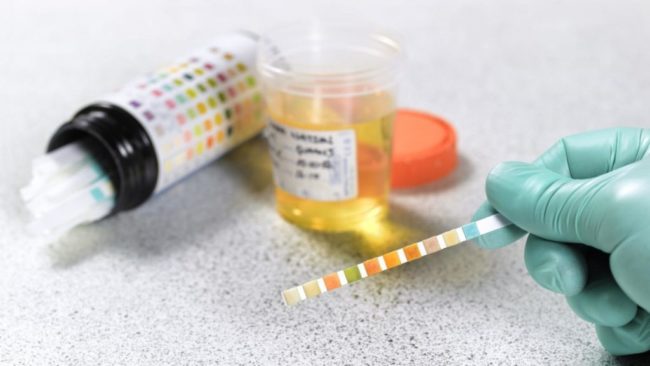
Nutrition and prevention of acetone in the urine
A special role in stopping, as well as the prevention of increased acetone in the urine is played by a diet. Food should be adjusted: fatty, “heavy” food, alcohol, foods rich in purins are excluded from it.
The diet for acetone in the urine provides for the use of such products:
- fruits and not sour berries;
- bellies, crackers;
- cereals, broths on vegetables;
- baked apples;
- honey.
Which is prohibited:
- fatty meat and fish;
- tomatoes and sorrel;
- dairy products with fat content of more than 1.5%;
- broths (fish, meat);
- coffee, black tea;
- mushrooms;
- fast food:
- products with e-rents.
Important! The duration of the diet with acetone is established by the doctor, taking into account the condition of the patient.
After complete recovery, patients are given the following recommendations for the prevention of re -increase acetone:
- drink a sufficient amount of drinking water per day (at least 2 l);
- do not get carried away with diets and starvation;
- pay attention to motor activity: hypodynamia contributes to the development of acetony;
- abandon all bad habits;
- lead a healthy lifestyle.
Eat rationally, play sports and rest fully, and when the first symptoms of acetone appear in the urine, contact the doctor. Then your health will be under control, and acetone will not be able to harm you.









Comments
a couple of years ago, there was no side of metrogils from the same problem, there were no side effects ...
I’m not a fan of peeling at all, it saves from acne of metrogil, it also smoothes it ...
Great article! ...
I take the second course of the Capsules Climafite 911. The tides went very quickly. It became calmer, irritability went away and I sleep well ...
i also noticed - it is worth nervous, everything immediately affects the face. Therefore, I try to avoid conflicts and unpleasant people. Of the creams, I like Miaflow from wrinkles - smoothes not only small wrinkles ...